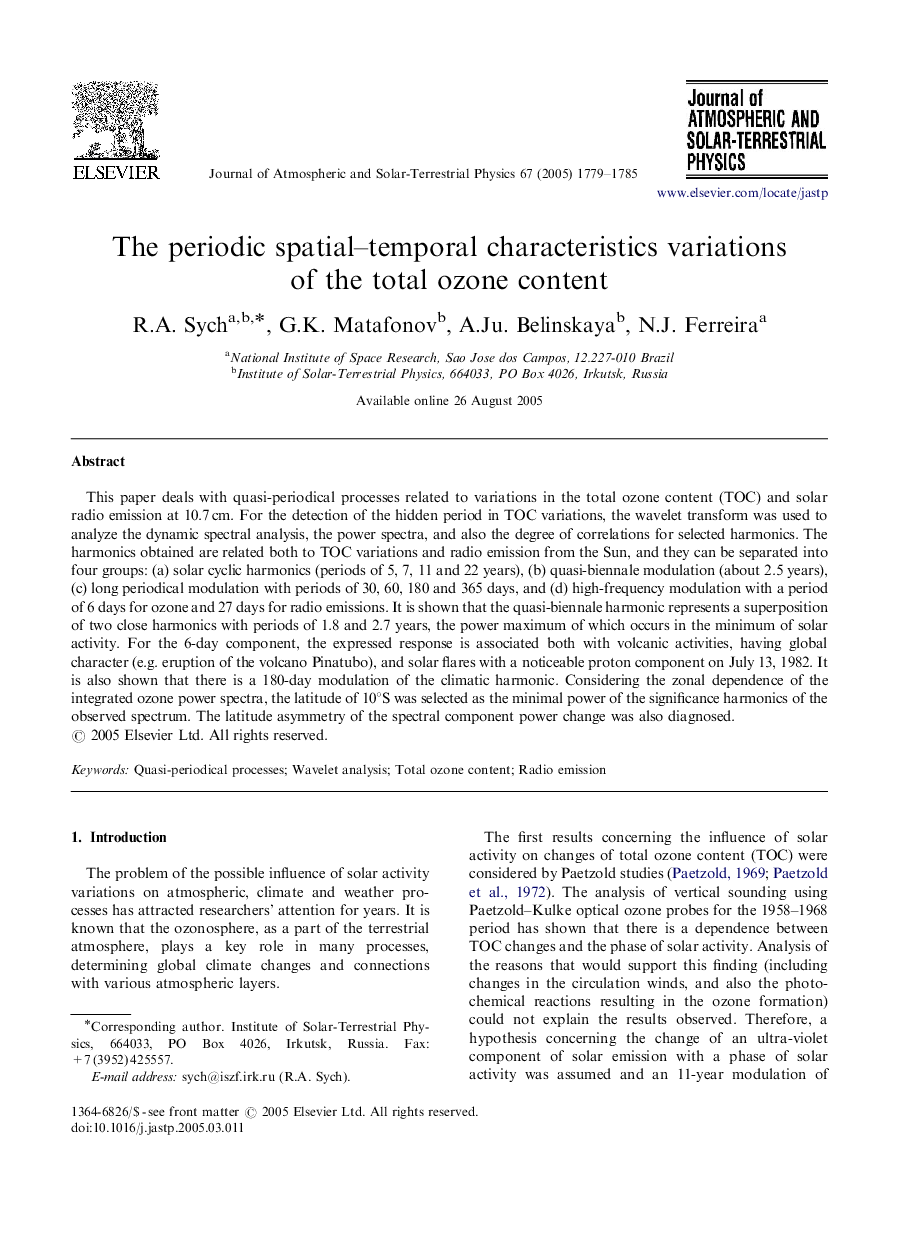| Article ID | Journal | Published Year | Pages | File Type |
|---|---|---|---|---|
| 9827682 | Journal of Atmospheric and Solar-Terrestrial Physics | 2005 | 7 Pages |
Abstract
This paper deals with quasi-periodical processes related to variations in the total ozone content (TOC) and solar radio emission at 10.7 cm. For the detection of the hidden period in TOC variations, the wavelet transform was used to analyze the dynamic spectral analysis, the power spectra, and also the degree of correlations for selected harmonics. The harmonics obtained are related both to TOC variations and radio emission from the Sun, and they can be separated into four groups: (a) solar cyclic harmonics (periods of 5, 7, 11 and 22 years), (b) quasi-biennale modulation (about 2.5 years), (c) long periodical modulation with periods of 30, 60, 180 and 365 days, and (d) high-frequency modulation with a period of 6 days for ozone and 27 days for radio emissions. It is shown that the quasi-biennale harmonic represents a superposition of two close harmonics with periods of 1.8 and 2.7 years, the power maximum of which occurs in the minimum of solar activity. For the 6-day component, the expressed response is associated both with volcanic activities, having global character (e.g. eruption of the volcano Pinatubo), and solar flares with a noticeable proton component on July 13, 1982. It is also shown that there is a 180-day modulation of the climatic harmonic. Considering the zonal dependence of the integrated ozone power spectra, the latitude of 10°S was selected as the minimal power of the significance harmonics of the observed spectrum. The latitude asymmetry of the spectral component power change was also diagnosed.
Keywords
Related Topics
Physical Sciences and Engineering
Earth and Planetary Sciences
Geophysics
Authors
R.A. Sych, G.K. Matafonov, A.Ju. Belinskaya, N.J. Ferreira,
